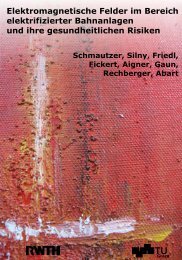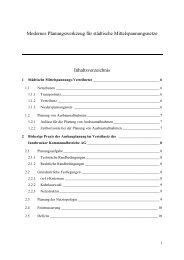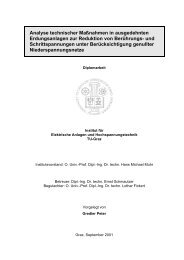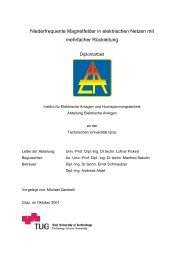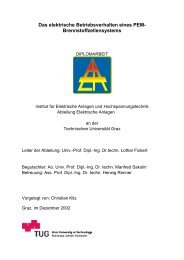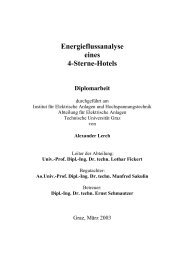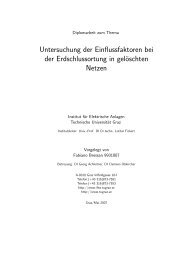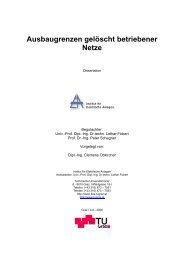Development of a wavelet-based algorithm to detect and determine ...
Development of a wavelet-based algorithm to detect and determine ...
Development of a wavelet-based algorithm to detect and determine ...
You also want an ePaper? Increase the reach of your titles
YUMPU automatically turns print PDFs into web optimized ePapers that Google loves.
7.3. MATLAB IMPLEMENTATION 61<br />
7.3.2 Summary<br />
Figure 7.7: Structure chart <strong>of</strong> the program module<br />
which identifies the disturbance<br />
It is possible <strong>to</strong> add new pattern for other disturbances. The calculation is the same as<br />
with already integrated disturbances. It is not necessary <strong>to</strong> find new criteria <strong>to</strong> <strong>detect</strong><br />
these new disturbances, as it is necessary if the identifying is estimated with changing<br />
<strong>of</strong> the RMS values (for example for a short circuit the criterias are: decreasing voltage<br />
<strong>and</strong> increasing current, but this can be a load switching also, thus additional criterias<br />
are need for this identifying).<br />
The characteristic pattern described are calculated for a voltage frequency <strong>of</strong> 60Hz at<br />
an unknown sampling rate. So these pattern have <strong>to</strong> be adopted for 50Hz <strong>and</strong> a known<br />
sampling frequncy. Through simulations with Matlab it is known that for getting the<br />
same pattern as described, a sampling rate <strong>of</strong> 8333,33Hz is necessary. Because this is<br />
not possible, the new pattern have <strong>to</strong> be calculated. To calculate them, it is necessary<br />
<strong>to</strong> have very clear disturbance recordings. Of course this is possible with a simula-<br />
<strong>to</strong>r (power network model or computer <strong>based</strong> simula<strong>to</strong>r). It is very interesting <strong>to</strong> do<br />
this simulation with a sampling rate <strong>of</strong> 12,8kHz, because the Simeas R disturbance<br />
recorder can be used <strong>to</strong> get the disturbance recordings or 6,4kHz because the distur-<br />
bance recording can be downsampled from the recordings from the Simeas R. The<br />
pattern for several equal disturbances are not the same exactly but in a small range. So<br />
several disturbances for each fault have <strong>to</strong> be calculated <strong>to</strong> get the range <strong>of</strong> the pattern.<br />
In the time for this diploma thesis, it was not possible <strong>to</strong> make these simulations.<br />
It is obvious <strong>to</strong> use this small peaks, which are described above for localizing the dis-



